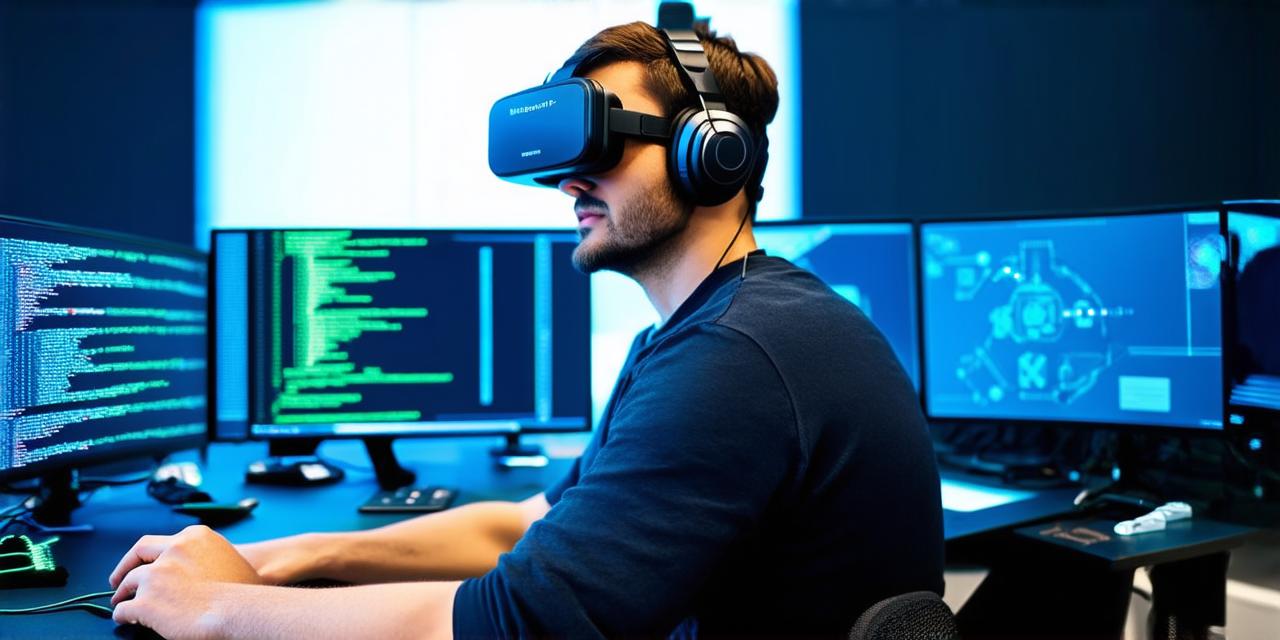Virtual Reality (VR) technology has come a long way since its inception, and it’s now becoming increasingly popular across various industries. With the advancement of VR development trends, developers can create more immersive experiences that engage users and provide them with unique perspectives on their surroundings.
1. Wireless VR Headsets
One of the most significant developments in VR technology is the emergence of wireless VR headsets. These headsets allow users to move freely and interact with their virtual environment without being tethered to a computer or other device. They are also more comfortable to wear, as they don’t require any cables that could get tangled or get in the way. Wireless VR headsets are becoming increasingly popular in industries such as gaming, education, and healthcare.
For example, medical professionals can use wireless VR headsets to simulate surgical procedures and provide patients with a more immersive experience during therapy sessions.
2. Hand Tracking
Hand tracking is another important development in VR technology that is becoming increasingly popular. With hand tracking, users can interact with virtual objects using their hands, making the experience more realistic and engaging. Hand tracking has already been used in various applications such as gaming, education, and healthcare.
In gaming, players can use hand tracking to manipulate objects in the game world, while in education, students can use hand tracking to interact with virtual models of historical artifacts or scientific concepts.
Hand tracking is also being used in therapy sessions to help patients with motor disabilities improve their fine motor skills.
3. Haptic Feedback
Haptic feedback technology allows users to feel physical sensations in the virtual world, making the experience more immersive and realistic. With haptic feedback, users can feel vibrations or pressure on their hands and feet, providing them with a sense of presence in the virtual environment.
Haptic feedback technology is being used in various applications such as gaming, education, and healthcare.
In gaming, players can feel the vibrations from a gun’s recoil or the impact of a punch. In education, students can feel the sensation of holding a historical artifact or the pressure on their feet while walking on a virtual terrain. Haptic feedback is also being used in therapy sessions to help patients with motor disabilities improve their proprioception.
4. Eye Tracking
Eye tracking technology allows VR systems to track where users are looking, enabling developers to create more immersive experiences that respond to the user’s gaze. With eye tracking, users can interact with virtual objects by simply looking at them, making the experience more intuitive and natural.
Eye tracking is already being used in various applications such as gaming, education, and healthcare.
In gaming, players can look around the game world to explore different areas or target specific enemies. In education, students can use eye tracking to interact with virtual models of historical artifacts or scientific concepts by looking at them from different angles.
Eye tracking is also being used in therapy sessions to help patients with eye movements disorders improve their visual perception.
5. Augmented Reality (AR) Integration
Augmented reality technology allows virtual objects to be overlaid onto the real world, creating a hybrid experience that combines the best of VR and AR. With AR integration, users can interact with virtual objects in their physical environment, making the experience more practical and useful.
AR integration is already being used in various applications such as gaming, education, and healthcare.
In gaming, players can use AR to enhance their gaming experience by overlaying virtual objects onto the real world. In education, students can use AR to visualize complex scientific concepts or historical artifacts in their physical environment. AR integration is also being used in therapy sessions to help patients with motor disabilities improve their hand-eye coordination.
Conclusion
VR development trends are constantly evolving, and developers need to stay ahead of the curve to remain competitive in the industry.
